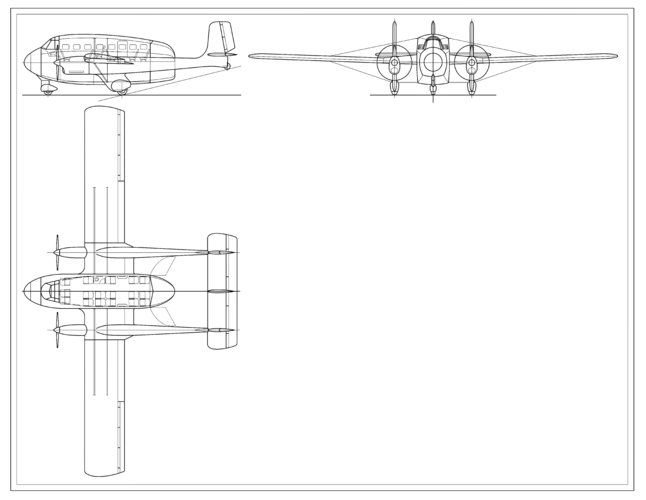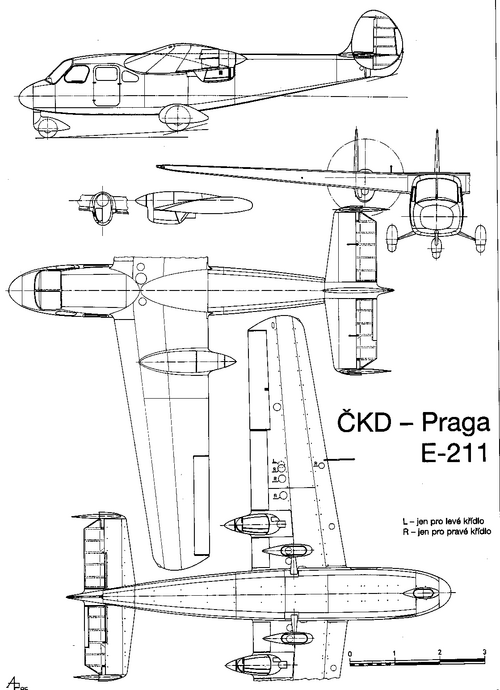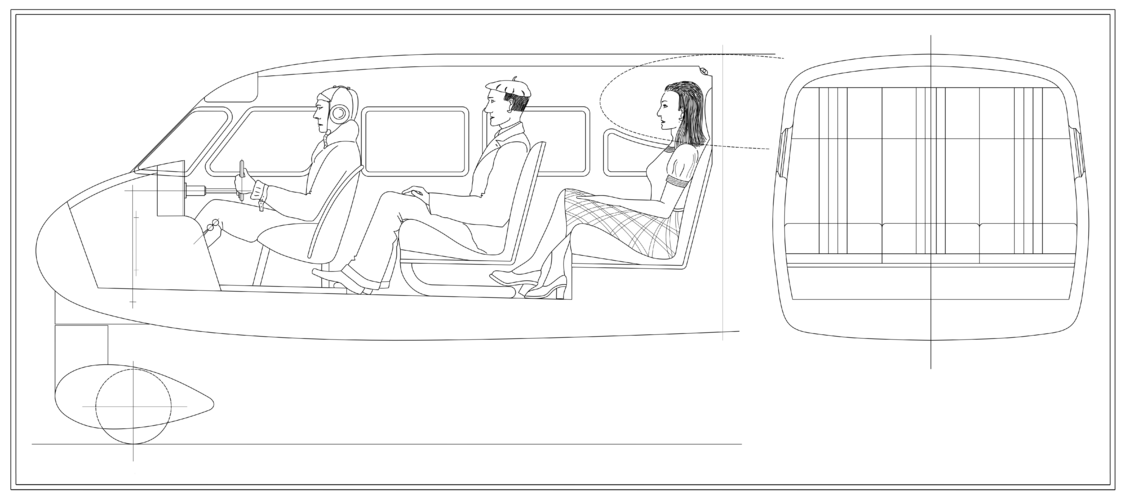You are using an out of date browser. It may not display this or other websites correctly.
You should upgrade or use an alternative browser.
You should upgrade or use an alternative browser.
Praga postwar projects
- Thread starter Sarastro
- Start date
My dear Hesham,Amazing find my dear Sarastro,
and I can speculate,may it was E-113,according to its year,we hope to see E-118 and
E-119 light aircraft projects.
i will specifically mention the types E-118, E-119, E-120 (1945 variant), E-120 ( 1948 variant), E-212 (1939), E-212(1947), E-215 (1947), LC-35 and LC-55. Type LD-80&81 is not a Praga design, but a design of the former Benes-Mraz company, so it will be listed in another thread...
Maveric
Fight for yor Right!
- Joined
- 14 January 2007
- Messages
- 2,180
- Reaction score
- 746
Sarastro, I would like to thank you today for your great work. You enrich the forum immensely and I am always thrilled about the beautiful projects that have been created in the CSSR. Thank you very much, please keep up the good work!
Dear Maveric,Sarastro, I would like to thank you today for your great work. You enrich the forum immensely and I am always thrilled about the beautiful projects that have been created in the CSSR. Thank you very much, please keep up the good work!
i am very grateful for your praise... My original intention was to post original scans of drawings from NTM Prague on this forum. However, for each original drawing (image) posted on the Internet, the museum charges about $60. I can't afford to do that, so my redrawing of the original drawings is the only way to get them into the public domain...
- Joined
- 26 May 2006
- Messages
- 33,572
- Reaction score
- 13,701
Hi,
the Praga E-119 project was an all-metal two-seat sport aircraft from 1948. Engine: Praga D 75 hp, wingspan: 11 m, length: 6,95 m, height: 2,78 m.
Other technical data were not preserved...
Source: Aviation archive NTM Prague
View attachment 736432
Amazing find my dear Sarastro,
but you feel it looks like E-120 ?.
Hi,
the type designation E-120 appeared twice at ČKD-Praga after 1945. The first time was in September 1945 for the project of a two-seater sports aircraft. The trade name of this type was to be „Super-Baby".
The wing was all-wood, the fuselage was welded from steel tubes. The front part of the fuselage up to the cockpit was covered with duralumin sheets, the rest of the fuselage with canvas. The ailerons, flaps and tail surfaces were welded from steel tubes , the covering was canvas.
Engine: Praga D 75 hp, wingspan: 10,55 m, length: 7,05 m, height: 1,82 m, empty weight 380 kg, standard gross weight 630 kg, maximum speed: 215 km/h, cruising speed 190 km/h, service ceiling 3 500 m, range 600 km
Source: Aviation archive NTM Prague

the type designation E-120 appeared twice at ČKD-Praga after 1945. The first time was in September 1945 for the project of a two-seater sports aircraft. The trade name of this type was to be „Super-Baby".
The wing was all-wood, the fuselage was welded from steel tubes. The front part of the fuselage up to the cockpit was covered with duralumin sheets, the rest of the fuselage with canvas. The ailerons, flaps and tail surfaces were welded from steel tubes , the covering was canvas.
Engine: Praga D 75 hp, wingspan: 10,55 m, length: 7,05 m, height: 1,82 m, empty weight 380 kg, standard gross weight 630 kg, maximum speed: 215 km/h, cruising speed 190 km/h, service ceiling 3 500 m, range 600 km
Source: Aviation archive NTM Prague
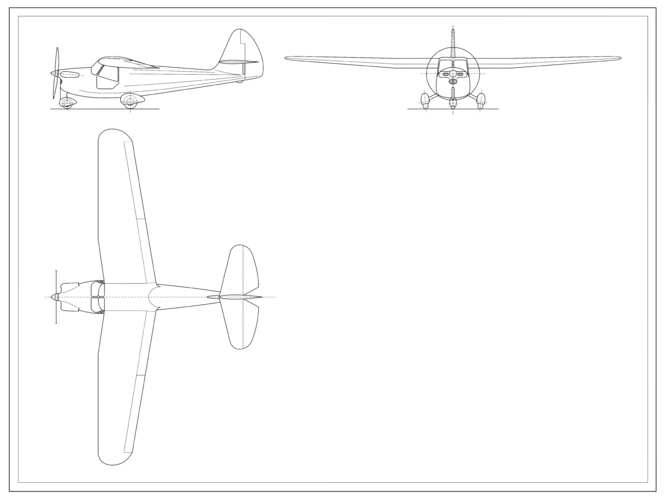
Hi,
the project of the eight-seat Praga E-212 is difficult to place in time. Intensive work on it began in early 1939, but then came 15 March 1939 and with it the end of Czechoslovakia and the declaration of the Protectorate of Bohemia and Moravia. During this period all work on the project was stopped. After 1945, the project was modernized, it remained promising for the ČKD-Praga company and it did not take much to start building a prototype of this aircraft in 1947. The aircraft had an all-wood construction, which Praga had already had technologically well developed since the E-114 type.
For the first variant of this aircraft the following engines were planned: 2* Praga ER 150 hp, Walter Minor 6 155 hp, Hirth HM 506A 150 hp and Cirrus Major 150 hp.
The 1947 version was to have two Waltwr Minor-III engines of 2*150 hp. Wingspan: 17,00 m, length: 11,90 m, height: 2,0 m, empty weight 1 600 kg, standard gross weight 2 545 kg, maximum speed: 245 km/h, cruising speed 215 km/h, service ceiling 4 300 m, range 750 km
The Bitner collection also lists a four-engined variant of this aircraft (4*Walter Minor 105 hp). However, there is no further information about this version...
Source: Aviation archive NTM Prague


the project of the eight-seat Praga E-212 is difficult to place in time. Intensive work on it began in early 1939, but then came 15 March 1939 and with it the end of Czechoslovakia and the declaration of the Protectorate of Bohemia and Moravia. During this period all work on the project was stopped. After 1945, the project was modernized, it remained promising for the ČKD-Praga company and it did not take much to start building a prototype of this aircraft in 1947. The aircraft had an all-wood construction, which Praga had already had technologically well developed since the E-114 type.
For the first variant of this aircraft the following engines were planned: 2* Praga ER 150 hp, Walter Minor 6 155 hp, Hirth HM 506A 150 hp and Cirrus Major 150 hp.
The 1947 version was to have two Waltwr Minor-III engines of 2*150 hp. Wingspan: 17,00 m, length: 11,90 m, height: 2,0 m, empty weight 1 600 kg, standard gross weight 2 545 kg, maximum speed: 245 km/h, cruising speed 215 km/h, service ceiling 4 300 m, range 750 km
The Bitner collection also lists a four-engined variant of this aircraft (4*Walter Minor 105 hp). However, there is no further information about this version...
Source: Aviation archive NTM Prague
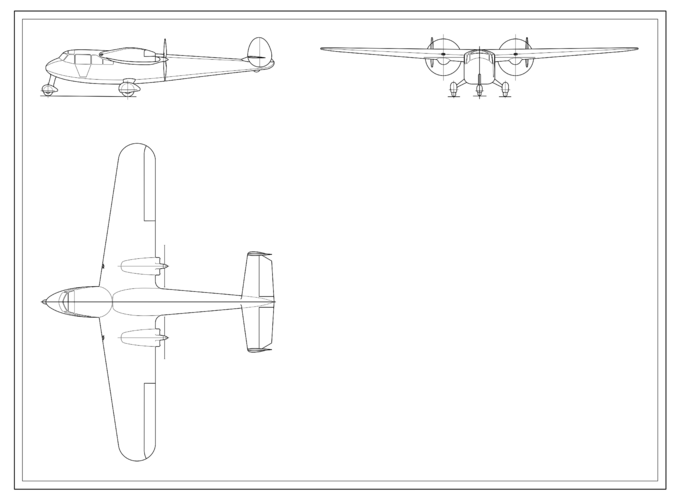
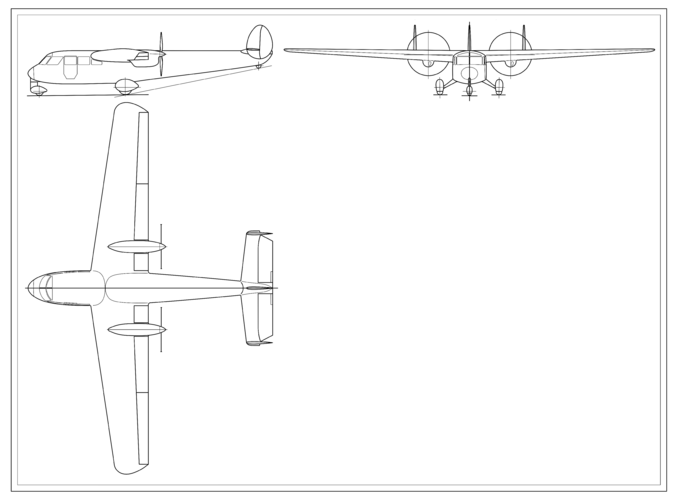
Tonton-42
ACCESS: Secret
- Joined
- 10 May 2014
- Messages
- 311
- Reaction score
- 556
There is many years ago I found that drawing of an hypothetic Praga E-211 on the web ... Alas I don't remenber who was the author ...
An another drawing of the Praga E-211 :
An another drawing of the Praga E-211 :
Attachments
Hi,
project of the four-seat all-metal Praga E-215 from December 1947. The project was submitted to the working commission for aircraft development at the Ministry of Transport. Considering the existence of the Aero Ae-45 type, whose fame was beginning to rise at that time, the chances of realizing this project were practically zero...
Engine: 2* Walter Minor 6/III 150 hp, wingspan: 12,50 m, length: 8,51 m, height: 2,65 m, empty weight 1 110 kg, standard gross weight 1 755 kg, maximum speed: 280 km/h, cruising speed 170 km/h, service ceiling 6 000 m, range 680 km
Source: Aviation archive NTM Prague


project of the four-seat all-metal Praga E-215 from December 1947. The project was submitted to the working commission for aircraft development at the Ministry of Transport. Considering the existence of the Aero Ae-45 type, whose fame was beginning to rise at that time, the chances of realizing this project were practically zero...
Engine: 2* Walter Minor 6/III 150 hp, wingspan: 12,50 m, length: 8,51 m, height: 2,65 m, empty weight 1 110 kg, standard gross weight 1 755 kg, maximum speed: 280 km/h, cruising speed 170 km/h, service ceiling 6 000 m, range 680 km
Source: Aviation archive NTM Prague
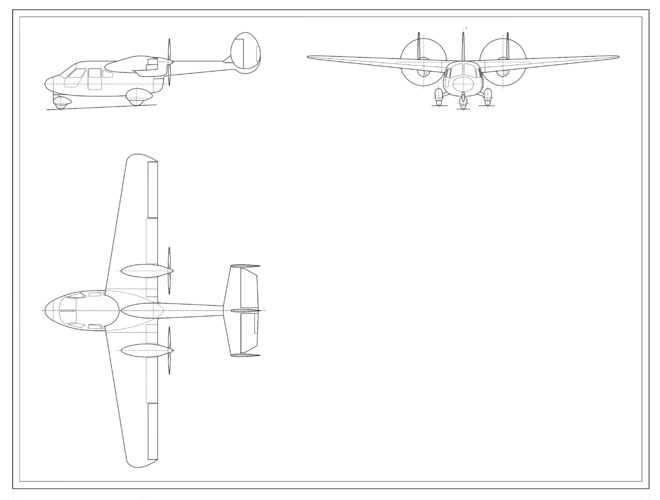
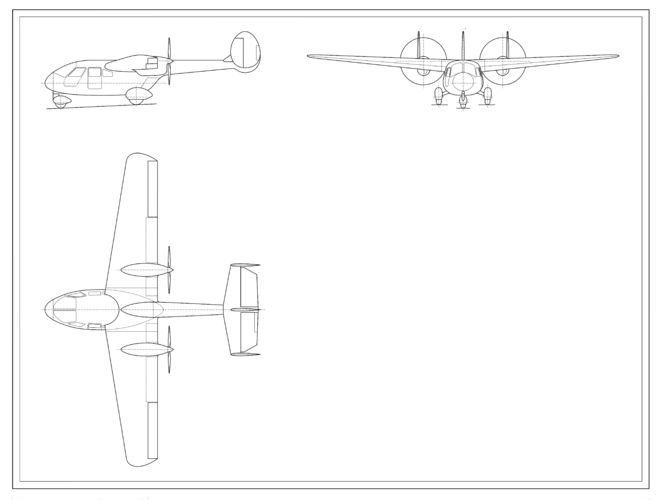
Hi,
Praga E-112 aircraft for basic pilot training. The first version of this aircraft was built in 1938 by modernizing the Praga BH-111 type. (He writes V. Němeček in his book Aircraft of Czechoslovak Pilots, vol. 1. There is no drawing of this version in the NTM archive). In 1946, the Ministry of National Defence announced a competition for a basic two-seat school plane. Praga modernized the E-112 project and entered it into this competition. One prototype was built, which failed in the battle with the Zlin Z-26, and so the Z-26 became the winner of this competition. The E-112 had all-wood wings, the fuselage was welded from steel tubes and the covering was canvas. The front of the fuselage was covered with duralumin sheeting...
E-112 1938

E-112 September 1945.
Engine: Praga E 140 Hp, wingspan: 10,50 m, length: 7,90 m, height: 2,4 m, empty weight 470 kg, standard gross weight 750 kg, maximum speed: 230 km/h, cruising speed 200 km/h, service ceiling 5 000 m, range 500 km.

E-112 March 1946.
Engine: Walter Minor 4-III 105 Hp, wingspan: 10,50 m, length: 7,80 m, height: 2,40 m, empty weight 470 kg, standard gross weight 750 kg, maximum speed: 225 km/h, cruising speed 205 km/h, service ceiling 5 000 m, range 720 km.

E-112 1947, prototype.
Engine: Walter Minor 4-III 105 Hp, wingspan: 10,65 m, length: 7,60 m, height: 2,25 m, empty weight 568 kg, standard gross weight 835 kg, maximum speed: 205 km/h, cruising speed 180 km/h, service ceiling 3 500 m, range 570 km.

Source: Aviation archive NTM Prague, L+K 8/1975
Praga E-112 aircraft for basic pilot training. The first version of this aircraft was built in 1938 by modernizing the Praga BH-111 type. (He writes V. Němeček in his book Aircraft of Czechoslovak Pilots, vol. 1. There is no drawing of this version in the NTM archive). In 1946, the Ministry of National Defence announced a competition for a basic two-seat school plane. Praga modernized the E-112 project and entered it into this competition. One prototype was built, which failed in the battle with the Zlin Z-26, and so the Z-26 became the winner of this competition. The E-112 had all-wood wings, the fuselage was welded from steel tubes and the covering was canvas. The front of the fuselage was covered with duralumin sheeting...
E-112 1938
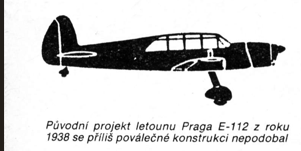
E-112 September 1945.
Engine: Praga E 140 Hp, wingspan: 10,50 m, length: 7,90 m, height: 2,4 m, empty weight 470 kg, standard gross weight 750 kg, maximum speed: 230 km/h, cruising speed 200 km/h, service ceiling 5 000 m, range 500 km.
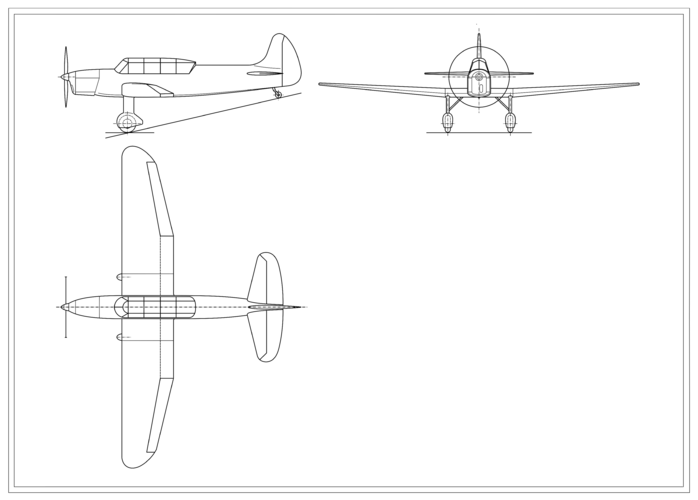
E-112 March 1946.
Engine: Walter Minor 4-III 105 Hp, wingspan: 10,50 m, length: 7,80 m, height: 2,40 m, empty weight 470 kg, standard gross weight 750 kg, maximum speed: 225 km/h, cruising speed 205 km/h, service ceiling 5 000 m, range 720 km.
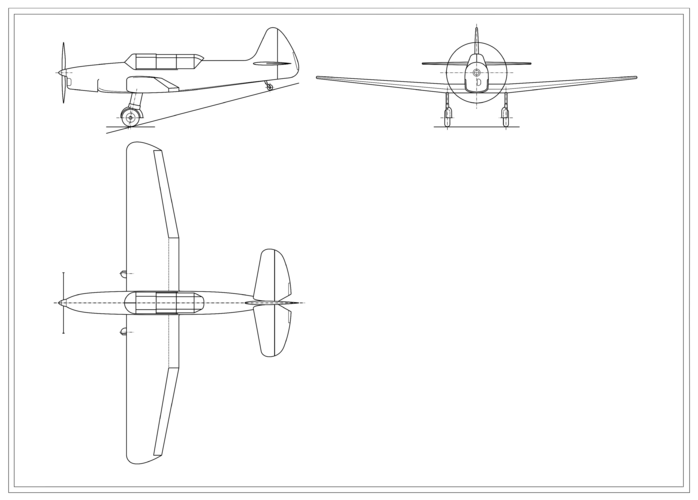
E-112 1947, prototype.
Engine: Walter Minor 4-III 105 Hp, wingspan: 10,65 m, length: 7,60 m, height: 2,25 m, empty weight 568 kg, standard gross weight 835 kg, maximum speed: 205 km/h, cruising speed 180 km/h, service ceiling 3 500 m, range 570 km.

Source: Aviation archive NTM Prague, L+K 8/1975
- Joined
- 11 March 2012
- Messages
- 3,122
- Reaction score
- 2,962
Odd how they sharply tapered the fuselage pod under the wings. That has created turbulent problems on low and mid-wing airplanes. Aerodynamically it is much simpler to streamline the wing/fuselage junction by just installing parallel fuselage walls. Since those propellers are already well die of the center-line, another foot or two would not make engine-out handling much worse.Hi,
project of the four-seat all-metal Praga E-215 from December 1947. The project was submitted to the working commission for aircraft development at the Ministry of Transport. Considering the existence of the Aero Ae-45 type, whose fame was beginning to rise at that time, the chances of realizing this project were practically zero...
Engine: 2* Walter Minor 6/III 150 hp, wingspan: 12,50 m, length: 8,51 m, height: 2,65 m, empty weight 1 110 kg, standard gross weight 1 755 kg, maximum speed: 280 km/h, cruising speed 170 km/h, service ceiling 6 000 m, range 680 km
Source: Aviation archive NTM Prague
View attachment 741547View attachment 741548
Hi,
the Praga LC-35 was an all-metal cargo aircraft project from April 1950. The type of engines that were to power this aircraft were not specified in detail, the specifications listed a rated power of 2*1,700 hp/2*2,100 hp. Due to the orientation of Czechoslovakia after the communist takeover in 1948 towards the then Soviet Union, the use of Švecov M-82FN engines can be assumed.
Wingspan: 31,50 m, length: 22,0 m, height: 7,5 m, empty weight 11 000 kg, standard gross weight 17 500 kg, maximum speed: 380 km/h, service ceiling 6 000 m, range 6 000 km.
PS: Where did the LC designation come from? After the liberation of Czechoslovakia in 1945, large industrial enterprises (over 500 employees) were nationalised by presidential decrees. In the spring of 1947, as a result of these changes, a unified design office was created in Czechoslovakia, to which all designers from the nationalized companies were transferred. The internal hierarchy of this group was divided according to the original aircraft manufacturers as follows. LA (Letov), LB (Aero), LC (Praga), LD (Benes-Mraz), LE (Avia), LG (development group for gliders), LG (Zlin).
Source: Aviation archive NTM Prague


the Praga LC-35 was an all-metal cargo aircraft project from April 1950. The type of engines that were to power this aircraft were not specified in detail, the specifications listed a rated power of 2*1,700 hp/2*2,100 hp. Due to the orientation of Czechoslovakia after the communist takeover in 1948 towards the then Soviet Union, the use of Švecov M-82FN engines can be assumed.
Wingspan: 31,50 m, length: 22,0 m, height: 7,5 m, empty weight 11 000 kg, standard gross weight 17 500 kg, maximum speed: 380 km/h, service ceiling 6 000 m, range 6 000 km.
PS: Where did the LC designation come from? After the liberation of Czechoslovakia in 1945, large industrial enterprises (over 500 employees) were nationalised by presidential decrees. In the spring of 1947, as a result of these changes, a unified design office was created in Czechoslovakia, to which all designers from the nationalized companies were transferred. The internal hierarchy of this group was divided according to the original aircraft manufacturers as follows. LA (Letov), LB (Aero), LC (Praga), LD (Benes-Mraz), LE (Avia), LG (development group for gliders), LG (Zlin).
Source: Aviation archive NTM Prague
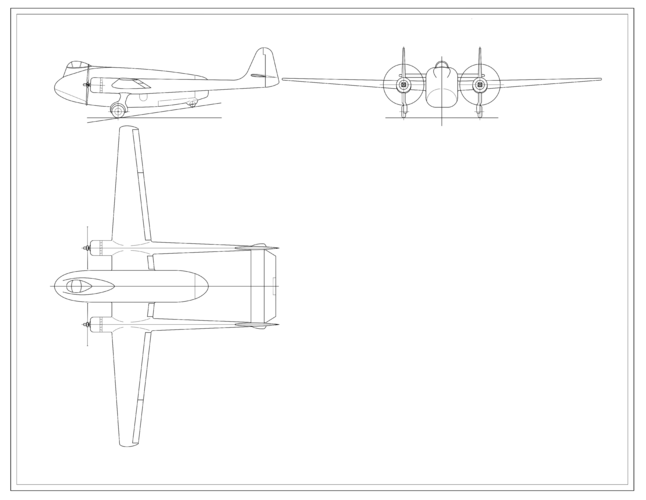
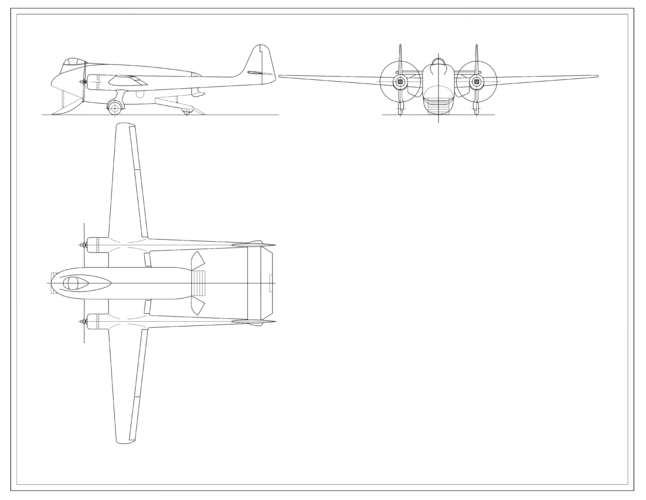
Hi,
in 1947, the Czechoslovak Ministry of Defence announced a competition for two types of liaison aircraft. The first type (two-seater) was to use the Walter Minor 4-III 105 hp engine (Aero Ae-50 prototype). The second (larger, three-seat) type was to use the Walter Minor 6-III 160 hp engine. In the summer of 1948 the competition was closed and the winner of the three-seat type was the Praga E-55 (LC-55)...
Upon completion of the E-55 in the autumn of 1949, the empty weight of the aircraft was found to exceed the design weight by 83 kg. In late 1949, the aircraft was flown and its flight characteristics (mainly due to the higher weight) were not good. The performance of the Walter Minor 6 engine was totally inadequate. No other type of engine was available at the time, so the project was abandoned at the end of 1950. The prototype was handed over to the Aeroclub Mladá Boleslav, where it crashed on landing in 1953...
Wingspan: 11,0 m, length: 8,5 m, height: 3,1 m, empty weight 640 kg, standard gross weight 960 kg, maximum speed: 165 km/h, service ceiling 3 250 m, range 450 km.
original project from 1947

drawing of the prototype

Source: Aviation archive NTM Prague, L+K
in 1947, the Czechoslovak Ministry of Defence announced a competition for two types of liaison aircraft. The first type (two-seater) was to use the Walter Minor 4-III 105 hp engine (Aero Ae-50 prototype). The second (larger, three-seat) type was to use the Walter Minor 6-III 160 hp engine. In the summer of 1948 the competition was closed and the winner of the three-seat type was the Praga E-55 (LC-55)...
Upon completion of the E-55 in the autumn of 1949, the empty weight of the aircraft was found to exceed the design weight by 83 kg. In late 1949, the aircraft was flown and its flight characteristics (mainly due to the higher weight) were not good. The performance of the Walter Minor 6 engine was totally inadequate. No other type of engine was available at the time, so the project was abandoned at the end of 1950. The prototype was handed over to the Aeroclub Mladá Boleslav, where it crashed on landing in 1953...
Wingspan: 11,0 m, length: 8,5 m, height: 3,1 m, empty weight 640 kg, standard gross weight 960 kg, maximum speed: 165 km/h, service ceiling 3 250 m, range 450 km.
original project from 1947

drawing of the prototype
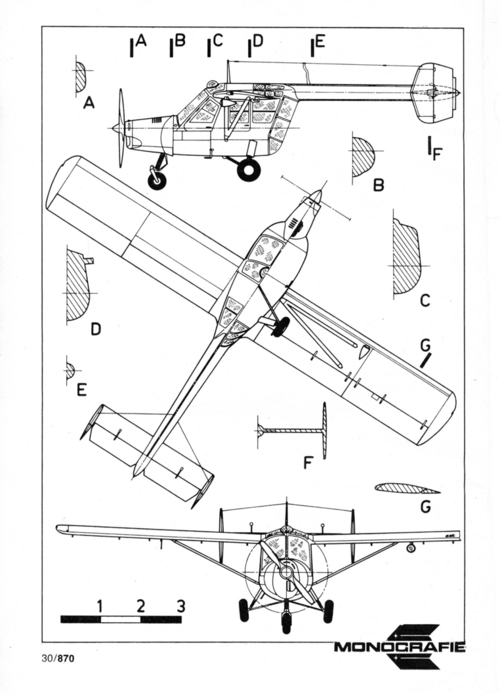
Source: Aviation archive NTM Prague, L+K
Similar threads
-
-
Czechoslovakian helicopters, Prototypes & Projects
- Started by Matej
- Replies: 38
-
Czech Light Aircraft Prototypes & Projects
- Started by hesham
- Replies: 20
-
-

